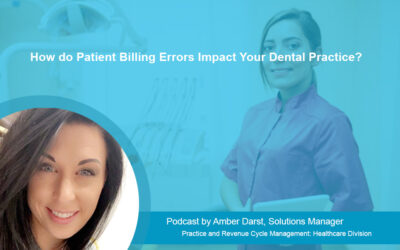Outsource Strategies International (OSI) is an experienced provider of rheumatology billing services. Our medical coding services can ease the claim submission tasks for practices and ensure proper and timely reimbursement.
Our AAPC or AHIMA certified coders are well trained in assigning accurate diagnostic and procedure codes and related modifiers. They are up to date with the changing medical billing and coding standards.
In today’s podcast, Loralee Kapp, one of our Solutions Managers, discusses the ICD-10 codes for osteoporosis.
Read Transcript
Hi this is Loralee Kapp, the Solutions Manager with Managed Outsource Solutions. Today, I want to talk to you about osteoporosis and their appropriate ICD 10 codes. It is important to remember that accurate coding is necessary for timely returns on claims. For a full list of ICD 10 codes associated with this podcast please see the attached document.
- M80 Osteoporosis with current pathological fracture.
- M80.0 Age-related osteoporosis with current pathological fracture
- M80.00 Age-related osteoporosis with current pathological fracture, unspecified site
- M80.01 Age-related osteoporosis with current pathological fracture, shoulder
- M80.02 Age-related osteoporosis with current pathological fracture, humerus
- M80.03 Age-related osteoporosis with current pathological fracture, forearm
- M80.04 Age-related osteoporosis with current pathological fracture, hand
- M80.05 Age-related osteoporosis with current pathological fracture, femur
- M80.06 Age-related osteoporosis with current pathological fracture, lower leg
- M80.07 Age-related osteoporosis with current pathological fracture, ankle and foot
- M80.08 Age-related osteoporosis with current pathological fracture, vertebra(e)
- M80.0A Age-related osteoporosis with current pathological fracture, other site
- M80.8 Other osteoporosis with current pathological fracture
- M80.81 Other osteoporosis with pathological fracture, shoulder
- M80.82 Other osteoporosis with current pathological fracture, humerus
- M80.83 Other osteoporosis with current pathological fracture, forearm
- M80.84 Other osteoporosis with current pathological fracture, hand
- M80.85 Other osteoporosis with current pathological fracture, femur
- M81 Osteoporosis without current pathological fracture
- M80.0 Age-related osteoporosis without current pathological fracture
- M80.6 Localized osteoporosis [Lequesne]
- M80.0 Age-related osteoporosis with current pathological fracture
M81.8 Other osteoporosis without current pathological fracture
00:24 Reporting Osteoporosis
Reporting osteoporosis on medical claims is a complex task. Experienced medical billing outsourcing companies will be up to date with coding standards. Osteoporosis is a bone thinning condition, which causes loss of bone mass, making bones more vulnerable to fractures. Diverse medical specialists such as endocrinologists, orthopedists and rheumatologists are involved in treating osteoporosis. Rheumatology medical coding involves reporting the condition using the right diagnosis and procedure codes. To assign the right codes, coders must know what type of osteoporosis the patient has been diagnosed with. Two categories of osteoporosis are: primary and secondary. While the primary osteoporosis is age-related, secondary condition is caused by any underlying condition. Primary osteoporosis can be further divided into “primary type I (postmenopausal osteoporosis)” and “primary type II (senile)” osteoporosis.
01:25 Causes and Treatment
Causes of secondary osteoporosis can be endocrine disorders, malnutrition issues, marrow, renal or collagen disorders. Common risk factors for osteoporosis can be osteomalacia, aging, vitamin D deficiency, or hypocalcemia.
Diagnosis tests recommended to identify the right type of osteoporosis include DEXA scan, vertebral fracture assessment, and blood tests. Treatment for osteoporosis may include orthopedic and medical treatment. Surgeries such as kyphoplasty and vertebroplasty may be recommended for patients experiencing painful vertebral compression fracture from the condition. Medications such as bisphosphonates are used to treat osteoporosis to reduce the risk of fracture. Other treatments may include estrogen/hormone replacement therapy, and thyroid and parathyroid hormone therapy.
02:23 Types
Osteoporosis can occur with or without pathological fracture. Age-related osteoporosis with current pathological fracture includes Involutional osteoporosis, Postmenopausal osteoporosis, Senile osteoporosis, and Osteoporosis not otherwise stated (NOS). Other osteoporosis with current pathological fracture includes Drug induced osteoporosis, Idiopathic osteoporosis, Osteoporosis of disuse, Post-oophorectomy osteoporosis, Postsurgical malabsorption osteoporosis, and Posttraumatic osteoporosis.
02:58 Coding and Documentation Tips
Age-related osteoporosis or other osteoporosis with current pathological fracture can be reported using the M80 series codes. Codes are selected based on the anatomical site of the fracture, not the location of the osteoporosis.
For osteoporosis without pathological fracture, codes from the M81 series can be used. While the sixth digit indicates laterality (right shoulder, left shoulder, unspecified shoulder), the seventh digit indicates the episode of care.
Osteoporosis fracture documentation involves definition of the episode of care (initial, routine, or delayed healing), specification of location and laterality (left or right), and precise classification for pathological fracture (senile osteoporosis, posttraumatic osteoporosis). Providers treating this condition can consider the services provided by experienced medical billing and coding companies to submit their claims with up-to-date codes. Submitting accurate claims can prevent claim denials and ensure optimal reimbursement.



